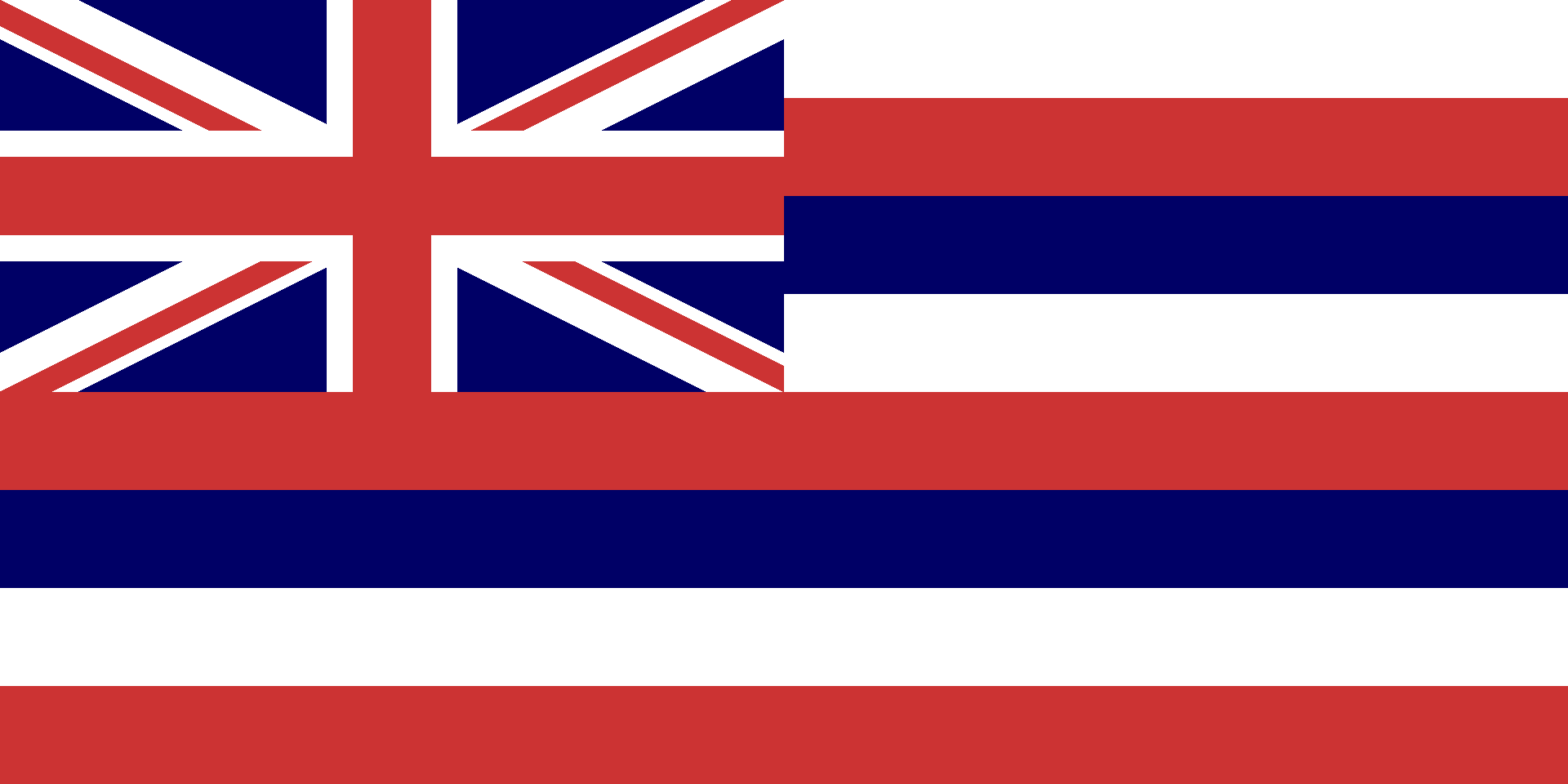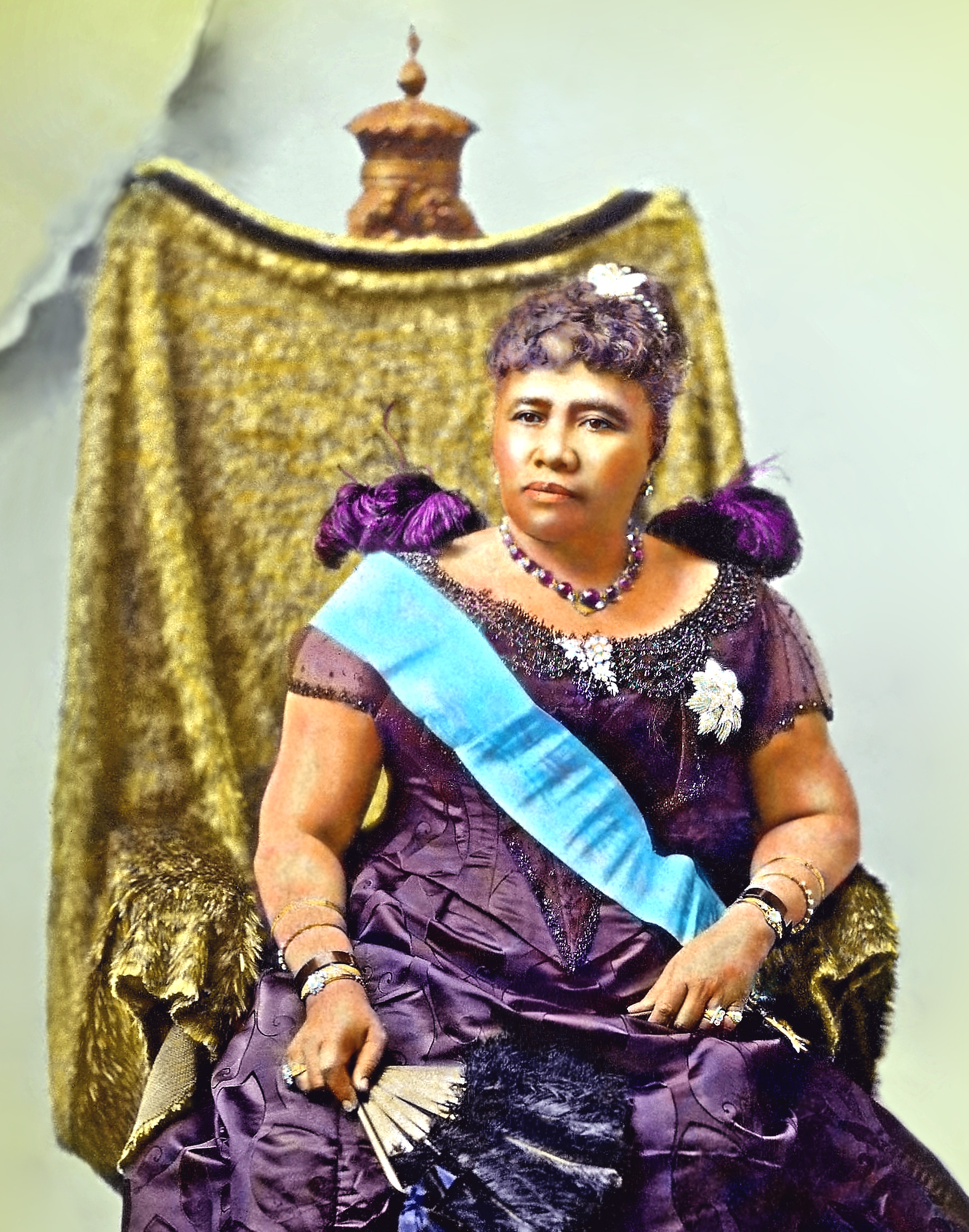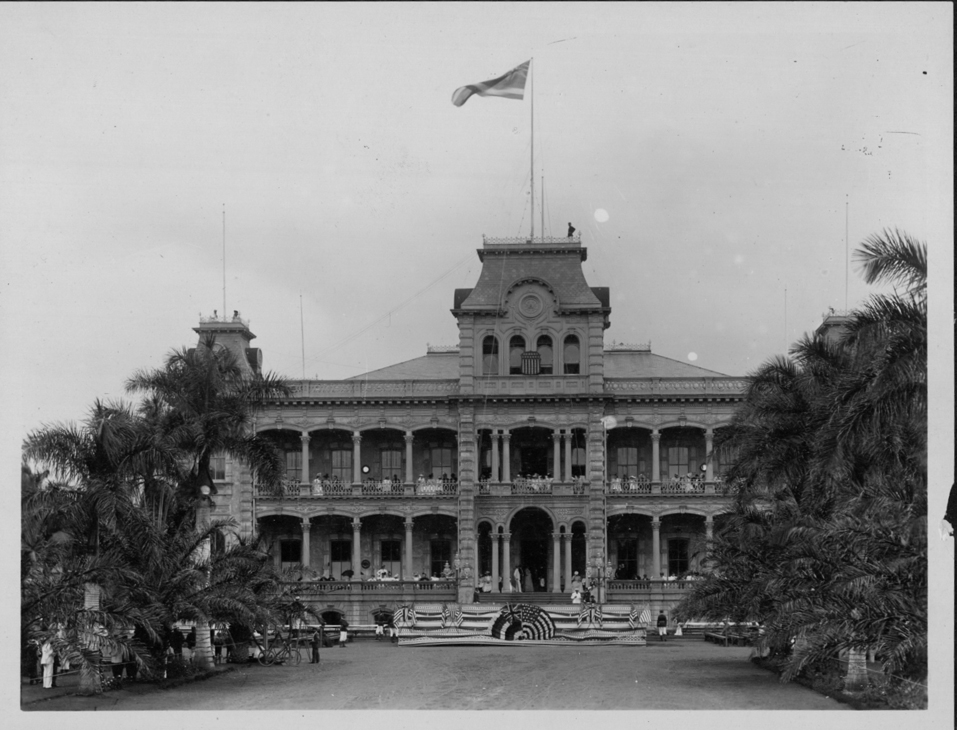Native Hawaiians Gaining Federal Recognition
Indigenous People of Hawaii
Sam Robbins
April 14, 2019
Introduction

Why don’t Native Hawaiians have federal recognition from the United States government when they have been looking to gain it for years? Native Hawaiians, along with plenty of other native communities throughout the continental United States, are still trying to gain federal recognition for their communities. This process of gaining federal recognition has taken years to have any kind of action taken on it. People within the Native Hawaiian communities are both for and against gaining federal recognition. The process of gaining federal recognition for any native community has both positive and negatives. The most obvious positive of federal recognition is that a specific Native community is once again recognized as a sovereign nation within a nation. The biggest negative of gaining federal recognition is that people within the Native Hawaiian community are wanting complete independence from the United States. While Native Hawaiians and all other Native American tribes are sovereign nations, the trouble is that the United States government does not recognize this sovereignity, that is why indigenous people are having to go through the process of federal recognition. There are criteria that tribes or communities need to meet to become federally recognized. If they meet the criteria then they are allowed to petition for federal recognition. Native Hawaiians have proposed a different process for gaining federal recognition, usually a petitioning process, they have proposed a legislation process instead.
Brief History of Hawaiian Government

Why is Hawaii part of the US? The history of the Hawaiian government begins when “Polynesian navigators first discovered the Hawaiian Islands more than a millennium ago, and for the next 1,000 years, flourished as a self-sustaining and self-governing people” (Hilleary, 2019).Then Hawaii became a part of the United States based mostly on its Geopolitical location and how it could be of use to the United States military. The U.S. Military presences was covered in a previous project by Dinah George. In that project there is also more information on the history of Hawaii.

The U.S. government illegally overthrew the queen of Hawaii, Queen Liliuokalani. This overthrow happened because the U.S. Military deemed Hawaii an essential place for a military base in 1893. Queen Liliuokalani was afraid of the U.S. military, so she ceded her authority to the United States (Trask, 2000). The people of Hawaii also viewed this overthrow as an act of war. The Queen of Hawaii was not able to claim back her throne thus leaving the native people of Hawaii under the authority of the United States. It wasn’t until 1953 that Hawaii achieved statehood in the United States (Trask, 2000). It wasn’t until the Clinton administration that the United States government officially apologized for the overthrow of the Queen of Hawaii (Trask, 2000).
This whole process most likely ended with the Native Hawaiians severly distrusting the United States government. That would mean this overthrow resulted in the people of Hawaii being governed by an entity that had no cultural understanding of their livelihood but saw a perfect location to place a military base and obtained that location through force. This is one of the leading reasons that many Native Hawaiians want to push for complete independence from the United States as unlikely as it might be, becasue they remember the history. This is why when the Clinton administration issued the apology it was questioned whether or not true reconcilation could ever be achieved if there was not a reestablishment of the Hawaiian Kingdom (Altemus-Williams, 2015).There is the small consolation that "Native Hawaiians have qualified like American Indians for many federal programs and services, but the U.S. government has not recognized Native Hawaiians as constituting a “nation-within-the-nation” the way it has American Indian tribes" (The State of Native Nations: Conditions under U.S. Policies of Self-Determination, 2007).
Short Timeline
According to a timeline made by Blaisdell in 1995
“1984
First Native Hawaiian Sovereignty Conference is held.
1992
February: OHA proposes "sovereignty package" to Congress: OHA to become self-government of new Hawaiian nation and to received ceded lands.
February: Legislature considers bill for Hawaiian nation to become "political subdivision of State of Hawai'i."
February: Senator Akaka introduces Apology Resolution.
1993
January 17: Mass protest at 'Iolani Palace against 1893 US invasion and coup.
February: Legislature rejects Ka Lahui's bill for recognition and land.
May: Legislature ignores previous SACI and creates Governor appointed 20-member Sovereignty Advisory Commission (SACII) to advise legislature on "Hawaiian sovereignty nation, constitutional convention and referendum for petition to Congress."
November 23: US President Clinton signs Akaka-initiated and revised Apology Resolution (PL-103-150) which: acknowledges the US 1893 "illegal overthrow of the Kingdom of Hawai'i...with suppression of the inherent sovereignty of the Native-Hawaiian people"; recognizes that "the indigenous Hawaiian people never directly relinquished their claims to their inherent sovereignty as a people over their national land to the US, either through their monarchy or through a plebiscite or referendum";"urges the President of the US to acknowledge the ramifications and support reconciliation efforts between the US and the Native Hawaiian people." (Blaisdell, 1995)
2005 Native Hawaiian Government Reorganization Act of 2005, which is also known as the Akaka Bill.
The Akaka Bill

There have been efforts to help Native Hawaiians gain back some of the self-governance and self-determination that they lost because of the overthrow. One of which is The Native Hawaiian Government Reorganization Act of 2005, which is also known as the Akaka Bill. It’s is named the Akaka Bill after Senator Daniel Akaka who advocated for Native Hawaiians gaining federal recognition. The Akaka Bill is meant to establish a government-to-government relationship between Native Hawaiians and the United States (Pybas, 2005). There are many reasons the Akaka Bill is important to Native Hawaiians. What could be considered the most important reason is that the bill refers to them collectively as “Native Hawaiians” and does not mention being part of a specific tribe. This would allow for greater protection for Native Hawaiians and allow them “to exercise self-determination and self-governance within the confines of U.S. law” (Pybas, 2005). To sum up
“Native Hawaiians will need the support of the Supreme Court to succeed in their argument that they are an Indian tribe. Without an increased interest on the part of the Supreme Court, the success of Native Hawaiians' endeavor to be recognized as an "Indian tribe" seems unlikely. Without a change, legislation that benefits Native Hawaiians will be analyzed on the same level as legislation benefitting African Americans, Caucasians, or Asian Americans ... with strict scrutiny” (Pybas, 2005).
Native Hawaiians Opinions
Contrary to what some people may assume Native Hawaiians have not just recently begun petitioning for sovereignty. Native Hawaiians did not take a back seat when being colonized. They fought back by resisting colonization through organizations and petitions (Hilleary, 2019). The movement for sovereignty really gained attention on the 100th anniversary of the overthrow of the Queen of Hawaii. Since gaining followers there have been a seperation into two seperate groups, those who want complete independence from the United States, and those who are seeking to be recognized as a nation within a nation relationship with the United States (Hilleary, 2019). Davianna Pomaika'i McGregor, a Hawaii historian states that "I’m very much in favor of reorganizing our government as a native people, not the government of the state of Hawaii as a whole, but the quest to reestablish an independent Native Hawaiian government within an independent Hawaii" (Hilleary, 2019).

The United States government wanted to find out the Native Hawaiians stance on gaining federal recognition. "In the summer of 2014, the U.S. Department of the Interior or DOI held a series of 15 public hearings throughout the Hawaiian islands" (Altemus-Williams, 2015). The main argument throughout these hearings was that the Native Hawaiians did not want the United States government involved in the nation of the Native Hawaiians. To give an idea numbers wise of the amount of Native Hawaiians that want to gain federal recognition "An online poll conducted by the Honolulu Star Advertiser newspaper asked whether the DOI should “keep open the process for federal recognition of Native Hawaiians,” 67 percent of participants said “no”"(Altemus-Williams, 2015). That is more than half, so why is this process still on-going when it does not seem like either party wants it? The answer is simple, it's the second best option for Native Hawaiians that want to reestablish complete independence from the United States government.
Conclusion
The process of gaining federal recognition is a seemingly endless, second best option for the Native people of America. The process of colonization took away these people’s land and then forced our way of governing onto them. This is not something that can be rectified overnight or with a simple solution. There are millions of people living on the islands of Hawaii and any decision made by legislation would affect each and every one of them. Since Native Hawaiians are still in the initial phases of gaining legislation to achieve federal recognition it will most likely take years to see any change on this political front. This different approach to gaining federal recognition that the Native Hawaiians have taken might also help others achieve federal recogniton without the petitioning process. The future for Native Hawaiians governance and self-determination is up in the air, but it is quite obvious that their voices will be heard and changed will be made.
References
Altemus-Williams, I. (2015, December 7). Towards Hawaiian Independence: Native Americans Warn Native Hawaiians of the Dangers of Federal Recognition. In Intercontinental Cry. Retrieved from https://intercontinentalcry.org/towards-hawaiian-independence/
Blaisdell, K. (1995, December 19). Historical Background for 1993 Apology Resolution. In Sovereignity Timeline. Retrieved from http://www.downwindproductions.com/hawaiitimeline/sovereignty_timeline.html
Grube, N. (2018, December 20). Civil Rights Panel Backs Federal Recognition For Native Hawaiians. In Honolulu Civil Beat. Retrieved from https://www.civilbeat.org/2018/12/civil-rights-panel-backs-federal-recognition-for-native-hawaiians/
Hawaii News Now. (2018, December 21). Report on funding for Native Americans also urges federal recognition of Native Hawaiians. In Hawaii News Now. Retrieved from http://www.hawaiinewsnow.com/2018/12/21/report-funding-native-americans-also-urges-federal-recognition-native-hawaiians/
Hilleary, C. (2019, February 7). Native Hawaiians Divided on Federal Recognition. In VOA News. Retrieved from https://www.voanews.com/a/native-hawaiians-divided-on-federal-recognition/4775275.html
Kehaulani Kauanui, J. (2005, April). Precarious Positions: Native Hawaiians and US Federal Recognition. The University of Hawaii Press, 17(1), 1-27. Retrieved from https://muse.jhu.edu/article/177468/summary
Myers, M. D. (2001, March 22). Federal recognition of Indian tribes in the United States. Stanford law & policy review, 12(2), 271-300. https://heinonline.org/HOL/LandingPage?handle=hein.journals/stanlp12&div=27&id=&page=
Pybas, J. (2005). Native Hawaiians: The Issue of Federal Recognition. American Indian Law Review, 30(1), 185-202.
Trask, H. (2000). Native Social Capital: The Case of Hawaiian Sovereignty and Ka Lahui Hawaii. Policy Sciences, 33(3/4), 375-385. Retrieved from http://www.jstor.org/stable/4532510
Links to Pictures
Image 1: Flag of Hawaii- https://commons.wikimedia.org/wiki/File:Flag_of_Hawaii.png
Image 2: Queen Liliuokalani- https://commons.wikimedia.org/wiki/File:Queen_Liliuokalani_color.jpg
Image 3: Aerial view of Ford Island Pearl Harbor- https://commons.wikimedia.org/wiki/File:Aerial_view_of_Ford_Island_Pearl_Harbor_2013.JPG
Image 4: Senator Daniel Akaka- https://commons.wikimedia.org/wiki/File:DanielAkaka.jpg
Image 5: Iolani Palace- https://commons.wikimedia.org/wiki/File:Hawaiian_flag_over_Iolani_Palace_before_Annexation_ceremony_(PP-36-1-019).jpg